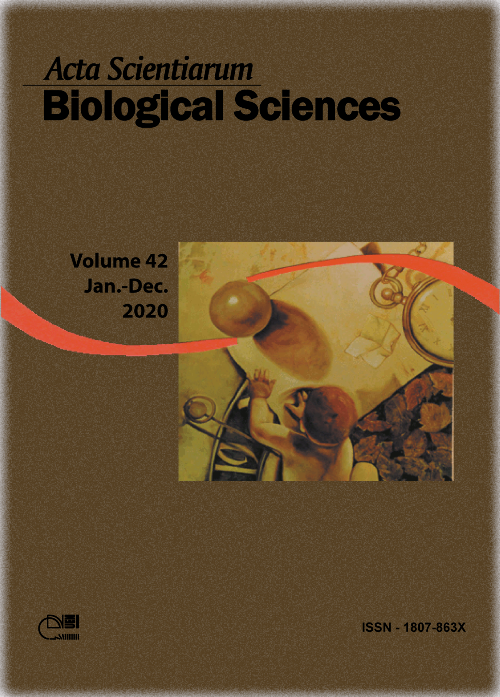Nutritive value and anatomical characterization from Pennisetum purpureum genotypes
Abstract
The research submitted samples from stems and leaf blades from tree genotypes of Pennisetum purpureum called 93-32-02, 92-70-02, and 91-06-02 (EMBRAPA - Dairy cattle) and elephant grass cv. Napier (reference cultivar) to the chemical, anatomical evaluations, and in vitro dry matter digestibility (IVDMD) measurement. The anatomical characteristics of the stems and leaf blades, the chemical composition, and the IVDMD of these genotypes at 70 days of re-growth were correlated. Concerning IVDMD, the data highlighted differences, and the cultivar Napier presented the smallest value. Digital images obtained by light microscopy from cross-section reveal that all the stem and leaf blade have similar structural organization. Quantitative differences were verified mainly in the stem. The leaves displayed differences only in the mesophyll thickness. The genotypes showed higher potential in the rainy season since they had the largest IVDMD when compared to the cultivar Napier.
Downloads
DECLARATION OF ORIGINALITY AND COPYRIGHTS
I Declare that current article is original and has not been submitted for publication, in part or in whole, to any other national or international journal.
The copyrights belong exclusively to the authors. Published content is licensed under Creative Commons Attribution 4.0 (CC BY 4.0) guidelines, which allows sharing (copy and distribution of the material in any medium or format) and adaptation (remix, transform, and build upon the material) for any purpose, even commercially, under the terms of attribution.
Read this link for further information on how to use CC BY 4.0 properly.












1.png)




3.png)













